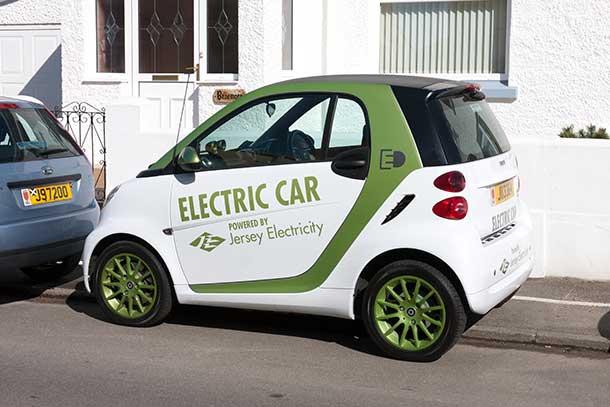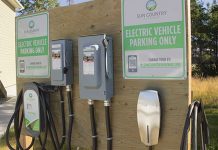There has been a buzz in the automobile industry for a while now. That buzz is about electric cars and, more importantly, their charging stations. An electric vehicle charging station is an ideal green option considering they are running on electricity, making them resistant to carbon emissions. Despite their many benefits, not many people are appropriately aware of how they work and their types.
More and more manufacturers have introduced remarkable automobiles that use an EV charger; their popularity has drastically increased in these recent years. While people remain confused, they know that it is an innovation that will positively impact the future.
However, learning about EV charging stations is crucial, especially if you are considering one for yourself. If you don’t know about the EV charger, you may not be able to use it properly, and you won’t be able to choose which one you should install, considering there are types of EV charging stations.
How Does an Electric Vehicle Charging Station Work
The more technical term is electric vehicle charging is electric vehicle supply equipment. Like a smartphone, an electrical vehicle needs enough power to continue running. And similar to a smartphone charger, an electric charger provides the vehicle’s battery with electricity to run.
The EV charger taps into the electrical grid to charge the battery of an electric vehicle. It pulls currents from the electrical grid and gives the vehicle’s battery the power to run. An EV charger delivers electricity through a plug or a connector. The battery of an electric vehicle can only accept DC (direct current) power.
You can charge your electric vehicle at a public charging station or a home charging station; in fact, you can also find them on commercial property. Those are level 3 stations that have powerful charge points, allowing you to charge your EV quickly.
Types of EV Charging Stations
There are three standard types of EV charging stations. They are often referred to as EVSE, as it is their more technical term. These types range from simple to complex; you will have to think about which one will suit your needs best.
Level 1
A level 1 charging station is as it sounds; it is the most basic of the three types and is rather straightforward. The charging plug that comes with the lease or purchasing an electric vehicle is a level 1 charger. This charger can use a basic current (which is around 120 or 110 volts), while others plug into a grounded wall socket by using a standard three-prong connector.
Their reduced cost and simplicity make them appealing; however, they are notoriously slow chargers. They recharge the battery at an agonizingly slow pace. They take up to 50 to 30 hours to recharge an EV.
Due to their lack of speed, they aren’t typically recommended. But if you own a hybrid electric vehicle (PHEV), you can use a level 1 charger since it will take overnight to charge with this charger.
Level 2
Now, there is a level 2 EV charging station; they are considered portable and efficient. These units use around 240 volts; their electric draws are similar to electric dryers.
A few level 2 EV charging stations use a unique form of the multi-pronged connector and associated outlets typically used for electric dryers. These are often used in residential areas because of their convenience and portability, and seeing as many homes have the outlets that a level 2 charger needs, it is perfect.
A level 2 charger recharges the battery a quarter of the time it usually takes a level 1 charger. This efficiency makes level 2 chargers famous and favored when it comes to electric vehicle chargers.
Many people install level 2 chargers in their homes; however, only an electrician in Richmond can do the installation process correctly. They will evaluate and inspect the garage (or whichever place you wish to get the station placed) and check if the voltage will be enough.
While hiring an electrician Richmond can seem like an unnecessary hassle, it is anything but that. They provide big advantages that are security, efficiency, and accuracy. These chargers recharge a car in less than 10 hours, and if you use a hybrid vehicle, you can recharge with a level 2 cable in 4 hours.
Level 3
The last level of an electric charging station is 3; it is made for commercial purposes only. They are for when you want a quick recharge when you are traveling on the road. They are complex and powerful EV chargers that aren’t recommended for residential use.
A level 3 charger allows for DC fast charging, which is what makes it the fastest charging station type. In fact, some chargers can boost an EV battery from zero to full charge in less than one hour.
The typical voltage for the newest level 3 chargers ranges from 800 to 400; this means even a heavy-duty battery can charge from 10 percent to nearly full charge in under half an hour.
However, one of the reasons not everyone gets to level 3 chargers is because they can cost up to 50 thousand dollars. And even if you do have the funds to invest in this EV charger, the kind of electricity they need is beyond the authorization of residential properties.
Final Thoughts
Learning about EV chargers and their types will help you select one that best fits your requirements. If you are looking for a straightforward charger, go for level 1. If you want a more efficient and fast charger, choose level 2. However, level 3 chargers are advised for commercial use alone, considering their complexity and power.
Regardless, you have to contact a reliable and reputable electrician Richmond for the best service and accurate installation process.



